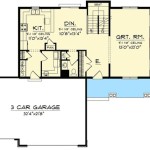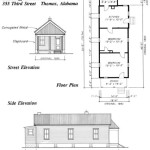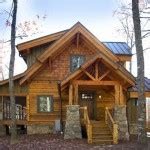Beach house plans on stilts are a type of construction that elevates a beach house above the ground level. This design is commonly used in coastal areas where flooding or storm surges may occur, as it provides protection from water damage and erosion. By raising the house on stilts, it allows water to flow underneath during high tides or storms, minimizing the risk of structural damage.
The use of stilts for beach houses has been prevalent in various regions, such as the southeastern United States, the Caribbean, and Southeast Asia. These areas often experience high levels of rainfall and hurricanes, making stilt houses a practical solution for safeguarding coastal properties.
In the following sections, we will delve into the benefits, considerations, and specific features of beach house plans on stilts. We will explore how this design approach contributes to the resilience and longevity of coastal homes in flood-prone areas.
Beach house plans on stilts offer several advantages. Here are eight important points to consider:
- Elevated protection from flooding
- Reduced risk of erosion damage
- Enhanced natural ventilation
- Improved views and natural light
- Increased property value
- Unique architectural appeal
- Flexibility for future expansion
- Sustainable coastal building practice
By incorporating these features, beach house plans on stilts provide a resilient and aesthetically pleasing solution for coastal living.
Elevated protection from flooding
Elevated protection from flooding is a crucial advantage of beach house plans on stilts. By raising the house above the ground level, it significantly reduces the risk of water damage during floods or storm surges. The elevated structure allows floodwaters to flow underneath the house without compromising its structural integrity.
- Flood-prone areas
Coastal areas are particularly susceptible to flooding due to factors such as rising sea levels, heavy rainfall, and storm surges. Beach houses built on stilts are less vulnerable to flood damage, ensuring the safety and well-being of occupants.
- Reduced repair costs
In the event of a flood, beach houses on stilts are likely to incur lower repair costs compared to those built at ground level. The elevated structure minimizes water damage to the house’s foundation, walls, and contents, resulting in significant savings on repairs.
- Insurance benefits
Insurance companies often provide favorable rates for beach houses built on stilts. The elevated design is recognized as a flood mitigation measure, reducing the insurer’s risk of having to pay out claims for flood damage.
- Peace of mind
For homeowners, the peace of mind that comes with knowing their beach house is protected from flooding is invaluable. Stilt houses provide a sense of security and resilience against the unpredictable nature of coastal flooding.
Overall, the elevated protection from flooding offered by beach house plans on stilts is a key factor in ensuring the longevity and safety of coastal properties.
Reduced risk of erosion damage
Beach houses built on stilts benefit from a reduced risk of erosion damage. Erosion is the gradual wearing away of land due to the action of wind, water, or ice. Coastal areas are particularly vulnerable to erosion, as waves and storms can erode beaches and dunes, threatening nearby structures.
By elevating the house on stilts, beach house plans mitigate the risk of erosion damage in several ways. Firstly, the elevated structure reduces the impact of waves and storm surges on the foundation of the house. The stilts act as a buffer, absorbing the force of the water and preventing it from undermining the foundation.
Secondly, the open space beneath the stilt house allows for the natural flow of water and sediment during high tides and storms. This prevents the accumulation of sand and debris around the foundation, which can contribute to erosion. The stilt design ensures that the water can flow freely without causing damage to the house.
Furthermore, beach house plans on stilts often incorporate features such as windbreaks and vegetation to further reduce erosion. Windbreaks, such as fences or shrubs, help to slow down the wind and prevent it from carrying away sand. Vegetation, such as native grasses and plants, helps to stabilize the soil and prevent erosion by wind and water.
Overall, the reduced risk of erosion damage is a significant advantage of beach house plans on stilts. By elevating the house and incorporating erosion mitigation features, these designs enhance the resilience and longevity of coastal homes in erosion-prone areas.
Enhanced natural ventilation
Beach house plans on stilts offer enhanced natural ventilation, which contributes to a more comfortable and energy-efficient living environment. The elevated design allows for increased airflow throughout the house, promoting air circulation and reducing the buildup of heat and humidity.
The open space beneath the stilt house creates a natural convection current. Warm air rises through the house and exits through vents or windows located at higher elevations. As warm air escapes, cooler air is drawn in from the outside to replace it, resulting in a constant flow of fresh air throughout the house.
The elevated design also takes advantage of prevailing winds. By strategically positioning windows and vents to face the prevailing wind direction, beach house plans on stilts can maximize natural ventilation. This passive cooling strategy reduces the reliance on air conditioning systems, leading to lower energy consumption and cost savings.
In addition to improving air quality and reducing energy costs, enhanced natural ventilation also contributes to a healthier living environment. Improved air circulation helps to reduce the presence of allergens, pollutants, and moisture, creating a healthier indoor climate for occupants.
Overall, the enhanced natural ventilation provided by beach house plans on stilts is a significant advantage, offering improved comfort, energy efficiency, and a healthier indoor environment.
Improved views and natural light
Beach house plans on stilts offer improved views and natural light, enhancing the overall living experience and connection to the surrounding environment. The elevated design provides panoramic views of the ocean, beach, and surrounding landscape, creating a sense of openness and tranquility.
The height of the stilts allows for large windows and expansive glass doors that capture stunning views from multiple angles. By maximizing natural light, the interior spaces become brighter and more inviting, reducing the need for artificial lighting during the day. The natural light also contributes to a more positive and energizing atmosphere within the house.
The elevated design also takes advantage of the natural surroundings. By carefully positioning windows and balconies, beach house plans on stilts can frame specific views, such as a sunrise over the ocean or a sunset over the dunes. This thoughtful design approach creates a strong connection between the interior and exterior spaces, allowing occupants to fully immerse themselves in the beauty of their coastal environment.
Overall, the improved views and natural light provided by beach house plans on stilts enhance the overall quality of life for occupants. The panoramic views, abundant natural light, and connection to the surrounding environment contribute to a more enjoyable, healthier, and inspiring living experience.
Increased property value
Beach house plans on stilts contribute to increased property value due to several factors. These factors include:
- Flood and erosion resistance:
Beach houses built on stilts offer superior protection against flooding and erosion, which are major concerns in coastal areas. This increased resilience reduces the risk of property damage and costly repairs, making stilt houses more desirable and valuable in the real estate market.
- Elevated views and natural light:
The elevated design of beach house plans on stilts provides panoramic views of the ocean, beach, and surrounding landscape. This enhances the living experience and creates a strong connection to the natural environment. Properties with stunning views and abundant natural light are highly sought after and command a premium in the real estate market.
- Unique architectural appeal:
Beach house plans on stilts offer a unique and visually appealing architectural style. The elevated structure, open space beneath the house, and expansive windows create a distinctive and desirable aesthetic that sets these properties apart from traditional beach houses. Unique and architecturally significant homes often attract a higher market value.
- Sustainability and resilience:
In today’s market, buyers are increasingly prioritizing sustainability and resilience in their homes. Beach house plans on stilts demonstrate a commitment to environmental consciousness and long-term durability. These homes are designed to withstand the challenges of coastal living, including storms, flooding, and sea level rise. As a result, they are more attractive to buyers who value sustainable and resilient living.
The combination of these factors contributes to the increased property value of beach house plans on stilts. These homes offer a unique blend of protection, comfort, aesthetics, and sustainability, making them highly desirable and valuable in the coastal real estate market.
Unique architectural appeal
Beach house plans on stilts offer a unique and visually appealing architectural style that sets them apart from traditional beach houses. The elevated structure, open space beneath the house, and expansive windows create a distinctive and desirable aesthetic that enhances the living experience and increases the property value.
- Elevated design:
The elevated design of beach house plans on stilts creates a striking visual impact. The house appears to float above the ground, offering panoramic views of the surrounding landscape. This elevated perspective enhances the connection to the natural environment and creates a sense of openness and tranquility.
- Open space:
The open space beneath the stilt house is a defining architectural feature that adds to its unique appeal. This space can be used for a variety of purposes, such as parking, storage, or outdoor living areas. The open design allows for natural ventilation and creates a sense of spaciousness around the house.
- Expansive windows:
Beach house plans on stilts often feature expansive windows that capture stunning views of the ocean, beach, and surrounding landscape. These windows maximize natural light and create a strong connection between the interior and exterior spaces. The use of large windows also enhances the overall aesthetic appeal of the house.
- Variety of styles:
Beach house plans on stilts can be designed in a variety of architectural styles, from traditional to modern. This versatility allows homeowners to choose a style that complements their personal taste and the surrounding environment. Whether it’s a classic beach cottage or a contemporary masterpiece, the stilt design can be adapted to create a unique and visually appealing home.
Overall, the unique architectural appeal of beach house plans on stilts contributes to their desirability and value in the coastal real estate market. These homes offer a distinctive and visually stunning design that enhances the living experience and creates a strong connection to the surrounding environment.
Flexibility for future expansion
Beach house plans on stilts offer flexibility for future expansion, allowing homeowners to adapt their homes to changing needs and lifestyles over time. The elevated design provides a solid foundation for adding additional living space, decks, or other structures in the future.
Vertical expansion is a common way to add more living space to a beach house on stilts. By adding a second or even third story to the house, homeowners can increase the square footage without taking up more land. This is particularly useful for narrow or compact lots where horizontal expansion is limited.
Horizontal expansion is another option for adding more space to a beach house on stilts. This involves extending the footprint of the house by adding rooms, decks, or other structures on the ground level. The open space beneath the stilt house provides ample room for horizontal expansion, allowing homeowners to create additional living areas, guest rooms, or even a garage.
The flexibility of beach house plans on stilts also extends to reconfiguring and repurposing existing spaces. The open floor plan and lack of load-bearing walls on the ground level allow homeowners to easily change the layout of rooms, add new windows or doors, or convert existing spaces into different functions. This flexibility makes it easy to adapt the house to changing needs, such as adding a home office, creating a larger kitchen, or converting a guest room into a playroom.
Overall, the flexibility for future expansion is a significant advantage of beach house plans on stilts. The elevated design and open floor plan provide homeowners with the freedom to expand their homes vertically or horizontally, reconfigure spaces, and adapt to changing needs over time. This flexibility ensures that the house can grow and evolve along with the family’s lifestyle and requirements.
Sustainable coastal building practice
Beach house plans on stilts align with sustainable coastal building practices by minimizing environmental impact and promoting resilience in coastal ecosystems. The elevated design reduces the footprint of the house on the ground, preserving natural vegetation and wildlife habitats. Additionally, the use of sustainable materials, energy-efficient appliances, and renewable energy sources contributes to the overall sustainability of these homes.
One of the key sustainability benefits of beach house plans on stilts is the reduced impact on coastal ecosystems. By elevating the house above the ground, the natural flow of water and sediment is maintained, preventing erosion and preserving the delicate balance of the coastal environment. This approach also minimizes the disturbance of wildlife habitats, as the open space beneath the house allows for the movement of animals and the growth of native vegetation.
Beach house plans on stilts also promote energy efficiency and the use of renewable energy sources. The elevated design allows for natural ventilation, reducing the need for air conditioning. Additionally, the use of energy-efficient appliances, solar panels, and rainwater harvesting systems further reduces the environmental impact of these homes. By incorporating sustainable features, beach house plans on stilts contribute to a greener and more sustainable coastal lifestyle.
Furthermore, beach house plans on stilts are designed to withstand the challenges of coastal living, including storms, flooding, and sea level rise. The elevated structure provides protection from storm surges and flooding, while the use of durable materials and wind-resistant construction techniques ensures the longevity of the house. By adopting sustainable coastal building practices, beach house plans on stilts promote resilience and adaptation to the changing coastal environment.
Overall, beach house plans on stilts offer a sustainable and resilient approach to coastal living. By minimizing environmental impact, preserving ecosystems, promoting energy efficiency, and adapting to the challenges of coastal environments, these homes contribute to the long-term sustainability of coastal communities.










Related Posts








